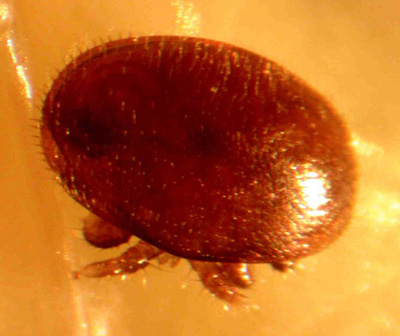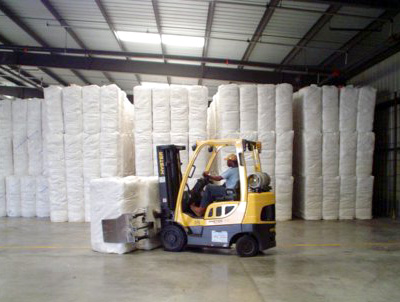Regulatory
The National Cotton Council remained engaged with EPA and other organizations as EPA released proposed revisions to the Agricultural Worker Protection Standard (WPS) – an effort that had been underway for more than a decade. After the EPA eventually released its proposed revisions, the NCC submitted comments that were reviewed and approved by its Environmental Task Force.
The Occupational Safety and Health Administration (OSHA) announced a final injury-reporting rule that requires employers to notify OSHA of work-related fatalities and injuries when an employee is killed on the job or suffers a work-related hospitalization, amputation or loss of an eye. The rule, which also updates the list of employers partially exempt from OSHA record-keeping requirements, went into effect on January 1, 2015, for workplaces under federal OSHA jurisdiction.
EPA asked a federal appeals court to uphold the agency's registration of the insecticide sulfoxaflor, saying there was substantial evidence that registration of the pesticide would not result in unreasonable adverse effects on the environment. EPA's move came after the NCC had worked with the Mid-South states for more than three years in obtaining Section 18's for the control of plant bugs, which have developed resistance to most other crop protectant products.
American Cotton Producers Chairman Bowen Flowers, joined by NCC staff and Monsanto representatives, participated in one of a series of sessions with EPA to express cotton's concerns about the proposed geographic restrictions and mandatory weed resistance label proposals for the herbicide labels for Dicamba, to be used on Dicamba-resistant traited cotton varieties anticipated to be released for the 2015 planting season. The NCC monitored this regulatory process throughout the year.
The NCC worked with Dow AgroSciences and EPA regarding the label use conditions for Dow's Enlist system prior to the company's release of its 2015 corn and soybean varieties containing a trait for resistance to a new formulation of 2,4-D. Label restrictions for corn and soybeans establish precedent for the company's 2,4-D tolerant cotton, still in regulatory review and expected to be commercially available in 2016. Both chemistries (new formulation 2,4-D and Dicamba)will give producers additional tools for managing herbicide resistant weeds.
In addition to the EPA efforts, NCC staff, working with both Dow AgroSciences and Monsanto, met numerous times with the Biotechnology Regulatory Services(BRS)division of USDA-APHIS. BRS is charged with the regulatory review of Dicamba and 2,4-D herbicide resistant traits in cotton varieties, anticipated to be released in 2015 and 2016, respectively. Deregulation of these herbicide resistant traits is the first, but parallel, step required for EPA approval of the use of these herbicides on cotton.
 The NCC supported H.R. 5078, a bill that would require EPA and the Corps of Engineers to consult with state and local officials to develop a consensus approach to defining what bodies of water should fall under federal jurisdiction. |
The NCC joined with other groups in requesting an extension of the 90-day comment period on a proposed rule from EPA and the Army Corps of Engineers that would define jurisdictional "waters of the U.S." (WOTUS) under the Clean Water Act (CWA). The NCC signed on to comments for the WOTUS docket developed by the Agricultural Nutrient Policy Coalition and the Pesticide Policy Committee.
The Waters Advocacy Coalition, in which the NCC was active, submitted a "Statement for the Record" to the House Transportation and Infrastructure Committee's Subcommittee on Water Resources and Environment, which raised serious concern over EPA's proposed rule. The statement noted the Coalition's belief that the proposal was inconsistent with congressional intent, the language of the CWA and Supreme Court precedent. The statement also encouraged continued congressional oversight on the issue. Another Coalition letter to EPA and the Corps asked them to withdraw the proposed rule saying it would fundamentally change the scope of the CWA and radically expand the Agencies' regulatory power over routine agricultural practices.
Prior to House passage of H.R. 5078, the Waters of the United States Regulatory Overreach Protection Act of 2014, NCC letters conveying support for the bill were sent to Cotton Belt House Members. H.R. 5078 would prohibit the agencies from moving forward on the controversial "waters of the U.S." rule and require them to consult with state and local officials to develop a consensus approach to defining what bodies of water should fall under federal jurisdiction.
Prior to a House Agriculture Committee Subcommittee on Conservation, Energy, and Forestry hearing to review the Interpretive Rule regarding the applicability of CWA agriculture exemptions, the NCC joined other agricultural organizations in submitting a statement to the Subcommittee that outlined fundamental concerns with the Interpretive Rule and called for its withdrawal. One of the numerous points in that letter was that the rule encompassed activities that were an ordinary part of a normal, ongoing farming, ranching or agriculture operation and that those activities should be absolutely lawful for producers to use with a CWA Section 404 permit. Later, the NCC issued an Action Alert to garner support for H.R. 935, the "Reducing Regulatory Burdens Act." That bipartisan legislation amended both the Federal Insecticide, Fungicide & Rodenticide (FIFRA) and the CWA to reverse a court decision which vacated a 2006 EPA rule and long-standing interpretation that the application of a pesticide in compliance with the requirements of FIFRA does not also require a separate National Pollutant Discharge Elimination System permit under the CWA. The House had to approve the legislation again after it failed to garner the necessary two-thirds vote for passage under suspension of the rules.
President Obama signed the Water Resources Reform and Development Act into law. That bill, which had been approved overwhelmingly by the House and the Senate, authorized the construction of major navigation and flood risk management projects. Moreover, Section 1049 of the law provided farmers and ranchers some relief from EPA's Spill Prevention Control and Countermeasure rule on farm storage tanks of fuel.
Pest Management
The NCC continued to be highly involved in pollinator protection activities that challenged crop protection product usage. Simultaneously, producer members and other stakeholders were encouraged to read more about the issue in a document on the NCC's website at www.cotton.org/issues/2014/beechal.cfm. Among activities the NCC monitored during 2014 was a study headed by the Pollinator Stewardship Council and Pesticide Research Institute which were encouraging beekeepers to report pesticide-related bee kills and to collect samples for lab analysis without having to wait on official state lead agencies to collect the data. The two groups asserted that beekeepers had experienced bee kill incidents but had not reported them to EPA.
 The NCC applauded USDA for holding its "Varroa Mite Summit" saying in a statement that the forum is a key step for stopping honey bee health decline. |
The NCC applauded USDA for holding its "Varroa Mite Summit" saying in a statement that the forum is a key step for stopping honey bee health decline. The NCC participated in the Summit which served as a forum for building collaborative efforts to improve the understanding of what causes bee losses.
Later, the NCC submitted comments to EPA and USDA which were soliciting input to assist a Pollinator Health Task Force charged with coordinating federal agency efforts to improve pollinator health. That Task Force's creation was requested by President Obama for obtaining input on the types of activities that could be part of the strategy, including public private partnerships, research, educational opportunities, pollinator habitat improvements and pesticide risk mitigation.
The Texas Boll Weevil Eradication Foundation program director reported to the NCC's Boll Weevil International Technical Advisory Committee that the majority of boll weevil captures in Texas continue to be in close proximity to the Rio Grande River bordering Mexico. Reason for optimism was that boll weevil captures on the Lower Rio Grande Valley's 141,677 cotton acres through October 2014 were 67 percent less than in 2013.
Cotton Flow/Packaging
The 2014 NCC Joint Cotton Industry Bale Packaging Committee's (JCIBPC) Specifications for Cotton Bale Packaging Materials were approved by USDA for packaging 2014-crop cotton for Commodity Credit Corporation (CCC) loan program purposes. The 2014 Specifications are the same as those approved for 2013 except for the addition of a new section for a system to "Form, Fill and Seal" PE film into gusseted bale bags. One firm was added to the JCIBPC list of approved manufacturers of PET strap for patented z-weld friction technology® systems. The list is at www.cotton.org/tech/bale/PET-strap-list.cfm.
JCIBPC Chairman Stan Creelman later sent a memo to all U.S. gins reminding them of their Cooperating Ginner's Bagging and Bale Ties Certification and Agreement which requires them to … "assist producers in maintaining the eligibility of their cotton for CCC loans by using bagging and bale ties that meet the Specifications for Cotton Bale Packaging Materials."
Based on NCC Board action, USDA was able to utilize EWR, Inc.-developed software that provided the agency with the ability to see shipping order information sent by merchants to warehouses – a move aimed at ensuring warehouses are meeting the minimum shipping standard. Specifically, the action allowed USDA to review an audit trail of requested shipping dates, provided to EWR, Inc., compared to actual dates shipped and bales made available for shipment data. The NCC Board also directed NCC staff to develop educational materials for use by appropriate interest organizations with their members. The aim was to provide background information on the initiative and summarize the procedures that should be employed by merchants, warehouses and ginners. The NCC issued multiple bulletins to certified interest organizations representing those industry segments updating them on shipping order update protocols.
 The NCC stepped up efforts to ensure warehouses are meeting the minimum shipping standard and encouraging warehouses to submit flow reports. |
The NCC also encouraged warehouses to submit flow reports after the Commodity Credit Corporation notified NCC staff that 21 warehouses failed to submit the reports for the week ending on May 16, 2014.
Research/Education
The NCC mailed "Contamination-Free Cotton" flyers to its producer, gin and warehouse leadership – as part of a reminder that preventing lint contamination is everyone's responsibility. The flyer focused on pre-harvest, in-season and post-harvest steps for preventing contaminants from getting into seed cotton and baled lint.
Field to Market®, the Alliance for Sustainable Agriculture, announced the launch of a new agricultural supply chain program for U.S. commodity crops. That alliance brings together a diverse group of grower organizations (including the NCC), agribusinesses, food, fiber, restaurant and retail companies, conservation groups, universities, and agency partners to focus on promoting, defining and measuring the sustainability of food, fiber, and fuel production.
The NCC-coordinated Beltwide Cotton Conferences continued its focus on research of new and existing products/technology and the extending of it to producers through consultants, Extension, allied industry and others directly involved in the decision-making process.
On other technical issues:
- NCC staff met with Deputy Under Secretary for Marketing and Regulatory Programs Gary Woodward, USDA Animal and Plant Health Inspection Service (APHIS) Administrator Kevin Shea, and other APHIS officials to discuss issues under their jurisdiction, among them boll weevil eradication and phytosanitary certificates, that are important to the U.S. cotton industry.
- The NCC cooperated with the National Cotton Ginners Association on the three 2014 Ginner Schools-- Southwest Ginners School in Lubbock, TX; Western Ginners School in Las Cruces, NM; and the Stoneville Ginners School, Stoneville, MS.
- Wes Malloy, who served as NCC's site manager of its Cotton Winter Nursery in Tecoman, Mexico, for 38 years, retired in 2014 in conjunction with the nursery's closing. He was the recipient of the 2013 Cotton Genetics Research Award.

